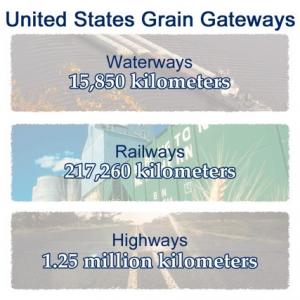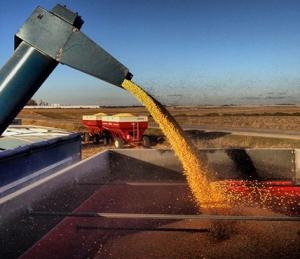Together, barge, train and truck transportation each play a key role in deliverying U.S. grain from farmers’ fields to domestic and international consumers. While some degree of competition exists among the transportation sectors, they each work toward the same objective and complement the goals of the U.S. barley, corn and sorghum and co-product industries.
In the United States, truck transportation is particularly important for distances of less than 500 miles (804.7 kilometers), according to the United States Department of Agriculture’s Agricultural Marketing Service. Trucking is always the first, and often the last, stage of the journey from farm to market.
All grain is shipped first by truck to on-farm storage or a local elevator. In many cases, grain may be hauled by truck several times: from farm to elevator; from the elevator to a bulk purchaser; and, depending on location, to an animal feeding facility, ethanol plant, feed manufacturer or export terminal.
The cost per ton for transporting grain in the United States is lower than in competing export countries. A drop in U.S. fuel prices in the latter months of 2014 supports this position and contributes to favorable marketing conditions for U.S. grain farmers.
While lower fuel costs are providing welcome relief, new state and federal regulations, along with infrastructure issues, are posing new challenges. The U.S. highway system includes roads that are built and maintained by federal, state and local jurisdictions. This allows for an interconnected yet complex system of regulations. Even so, grain organizations work closely with state highway departments to keep farmers up-to-date on current regulations including weights, measures, shrink on agricultural products and log hours for truckers.



